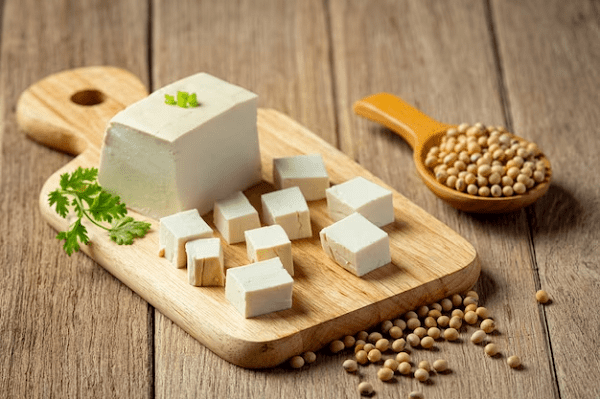Paneer varieties- Paneer, a fresh cheese commonly used in Indian cuisine, is a versatile ingredient that can be used in various dishes. Here are some popular paneer varieties and dishes:
- Paneer Tikka: Cubes of paneer marinated in a mixture of yogurt and spices, skewered, and grilled or baked until golden brown.
- Paneer Butter Masala: A rich and creamy curry made with paneer cubes cooked in a tomato-based gravy with butter and cream.
- Palak Paneer: A nutritious dish where paneer cubes are cooked in a spinach-based curry with spices.
- Kadai Paneer: Paneer cubes are cooked with bell peppers, onions, tomatoes, and a blend of spices in a kadai (wok).
- Shahi Paneer: A royal and creamy dish where paneer is cooked in a rich and flavorful cashew and cream-based gravy.
- Matar Paneer: A classic North Indian dish made with paneer and green peas in a tomato-based curry.
- Paneer Bhurji: Grated or crumbled paneer is sautéed with onions, tomatoes, and spices to make a delicious and quick dish.
- Chilli Paneer: Paneer cubes are coated with a spicy batter, deep-fried, and then tossed in a flavorful sauce with bell peppers and onions.
- Paneer Pakora: Paneer cubes dipped in a gram flour (besan) batter and deep-fried until crispy.
- Paneer Biryani: Fragrant rice cooked with spiced paneer cubes and aromatic spices.
- Paneer Wrap/Roll: Paneer cubes or grated paneer can be used as a filling in wraps or rolls with vegetables and sauces.
- Paneer Paratha: Grated or crumbled paneer is mixed with spices and stuffed into whole wheat dough to make delicious stuffed parathas.
- Paneer Salad: Cubes of paneer can be added to salads for a protein boost.
- Paneer Kofta: Paneer balls are deep-fried and served in a rich and creamy tomato or cashew-based gravy.
- Paneer Sandwich: Paneer slices or grated paneer can be used as a filling in sandwiches along with veggies and chutney.
These are just a few examples, and there are countless ways to prepare and enjoy paneer in various dishes. It’s a popular choice for both vegetarians and non-vegetarians alike due to its mild flavor and versatility.
What is Paneer varieties
When referring to “Paneer varieties,” it could mean different types or variations of paneer itself or the diverse ways paneer is prepared and used in various dishes. Here are some aspects of paneer varieties:
- Types of Paneer:
- Regular Paneer: The basic form of paneer made from curdling milk and separating the whey to obtain solid paneer.
- Herbed Paneer: Paneer infused with herbs such as basil, thyme, or cilantro during the preparation process.
- Spiced Paneer: Paneer mixed with spices like cumin, coriander, or red chili powder for added flavor.
- Paneer Dishes:
- Paneer Tikka: Marinated and grilled or baked paneer cubes often served as appetizers.
- Paneer Butter Masala: Paneer cubes in a rich tomato and cream-based curry.
- Palak Paneer: Paneer cooked in a spinach-based curry.
- Kadai Paneer: Paneer cooked with bell peppers, onions, and tomatoes in a kadai.
- Matar Paneer: A dish featuring paneer and green peas in a tomato-based curry.
- Paneer Bhurji: Scrambled paneer cooked with spices and vegetables.
- Chilli Paneer: Paneer cubes in a spicy and tangy sauce with bell peppers and onions.
- Regional Variations:
- Punjabi Paneer: Dishes influenced by Punjabi cuisine, known for its richness and bold flavors.
- South Indian Paneer: Incorporates flavors from the southern regions of India, often featuring coconut and curry leaves.
- Indo-Chinese Paneer: Fusion dishes that combine Indian paneer with Chinese flavors and cooking techniques.
- Commercial Varieties:
- Flavored Paneer: Available in stores with added flavors like pepper, garlic, or mixed herbs.
- Low-Fat Paneer: Paneer with reduced fat content for those looking for a lighter option.
- Homemade Variations:
- Homemade Flavors: Experimenting with homemade paneer by adding various herbs, spices, or seasonings during the preparation process.
Remember, the term “paneer varieties” can encompass a wide range of interpretations, and the variations may depend on personal preferences, regional influences, and culinary creativity. Whether commercially available or prepared at home, paneer is a versatile ingredient that can be adapted to suit different tastes and culinary traditions.
Who is Required Paneer varieties
It seems there might be a misunderstanding or a typo in the phrase “Required Paneer varieties.” It could be a mistake, or if it’s a specific term or concept, I’m not familiar with it as of my last training cut-off in January 2022.
If you meant to ask something else or have a specific question about paneer or any related topic, feel free to provide more details or clarify your question, and I’ll do my best to assist you!
When is Required Paneer varieties

It seems there might still be some confusion or a phrasing issue in your question. The term “Paneer varieties” refers to different types or preparations of paneer, a type of Indian cheese. However, the word “when” typically pertains to time and might not be applicable in this context.
If you’re asking about when to use different paneer varieties or when to prepare specific paneer dishes, it depends on personal preferences, occasions, and culinary choices. You can use different paneer varieties in various dishes according to your taste and the recipe requirements. If you have a specific question or if there’s something else you’d like to know, please provide more details for clarification.
Where is Required Paneer varieties
Paneer varieties, or different types of paneer, can be found in various places, including:
- Grocery Stores and Supermarkets: Many grocery stores and supermarkets, especially those with a diverse selection of international or Indian foods, carry different types of paneer. Look in the dairy or refrigerated section.
- Specialty Indian Stores: Stores that specialize in Indian groceries often have a wide variety of paneer, including different flavors, sizes, and brands.
- Online Retailers: You can also find paneer varieties on online platforms. Many grocery stores offer online shopping and home delivery services.
- Local Dairies: Some local dairies or cheese producers may offer artisanal or homemade paneer varieties. This could be available at farmer’s markets or directly from the producer.
- Restaurants or Catering Services: Restaurants that serve Indian cuisine may use or sell different types of paneer. Some restaurants or catering services might also offer freshly made paneer for purchase.
If you’re looking for specific or specialty paneer varieties, it’s a good idea to explore local stores that focus on international or Indian products. Additionally, you can try making different paneer varieties at home by experimenting with flavors and spices during the preparation process.
How is Required Paneer varieties
If you’re asking how to make different varieties of paneer, here’s a general guide on how you can customize paneer at home:
Basic Paneer Preparation:
- Ingredients:
- Milk
- Lemon juice or vinegar (for curdling)
- Procedure:
- Heat milk until it almost comes to a boil.
- Add lemon juice or vinegar to the milk, stirring continuously until the milk curdles.
- Strain the curdled milk using a muslin cloth to separate the whey from the paneer solids.
- Rinse the paneer under cold water to remove any traces of lemon juice or vinegar.
- Shape the paneer into a block or cubes as desired.
Customizing Paneer Varieties:
- Herbed Paneer:
- Add finely chopped herbs like cilantro, mint, or basil to the milk before curdling.
- Spiced Paneer:
- Mix in ground spices such as cumin, coriander, red chili powder, or garam masala to the milk before curdling.
- Flavored Paneer:
- Experiment with adding garlic powder, ginger powder, or other seasonings to the milk.
- Colored Paneer:
- Use natural colorants like saffron or turmeric to give the paneer a yellow tint.
- Nutty Paneer:
- Add crushed nuts like almonds or cashews to the milk for a nutty flavor and texture.
- Smoked Paneer:
- Infuse a smoky flavor by placing the paneer block in a smoker or using liquid smoke during the curdling process.
Remember, these are just suggestions, and you can get creative with your paneer by experimenting with different ingredients and flavors. Adjust the quantities based on your taste preferences. Once you’ve prepared the customized paneer, you can use it in various dishes according to your liking.
Case Study on Paneer varieties
Introduction of Innovative Paneer Varieties by Paneer Innovations Pvt. Ltd.
Background: Paneer Innovations Pvt. Ltd. is a leading food manufacturing company specializing in dairy products, particularly paneer. With a mission to cater to diverse consumer preferences and capitalize on the growing demand for unique flavors, the company has decided to introduce innovative paneer varieties to the market.
Objectives:
- Diversification: Expand the company’s product line by introducing new and unique paneer varieties.
- Market Capture: Tap into niche markets by offering specialized paneer products catering to different tastes and preferences.
- Brand Image: Enhance the brand’s image as a pioneer in creating innovative dairy products.
Implementation:
- Market Research:
- Conducted extensive market research to identify consumer preferences and gaps in the existing paneer market.
- Analyzed trends in global cuisine and flavor preferences to inspire new paneer varieties.
- Product Development:
- Collaborated with culinary experts to develop innovative paneer recipes, including herbed paneer, spiced paneer, and nut-infused paneer.
- Ensured that the new varieties aligned with dietary trends, such as low-fat options or vegan-friendly alternatives.
- Production and Quality Control:
- Implemented stringent quality control measures to maintain consistency in taste and texture across all batches.
- Sourced high-quality ingredients and ensured adherence to food safety standards.
- Branding and Packaging:
- Developed an attractive and informative packaging design that highlighted the uniqueness of each paneer variety.
- Created a marketing campaign emphasizing the company’s commitment to innovation and quality.
- Market Launch:
- Launched the new paneer varieties in key markets through a phased approach.
- Leveraged social media, traditional advertising, and participation in food events to create buzz.
- Customer Feedback and Adaptation:
- Encouraged customer feedback through online surveys and taste-testing events.
- Used feedback to make necessary adjustments to flavors, packaging, and marketing strategies.
Results:
- Market Reception:
- Positive response from consumers, leading to increased market share.
- Recognition as a pioneer in introducing innovative paneer varieties.
- Revenue Growth:
- Achieved a significant increase in revenue due to the successful introduction of new products.
- Brand Loyalty:
- Enhanced brand loyalty as consumers associated the company with quality and innovation.
- Expansion Opportunities:
- Identified opportunities for further expansion into international markets based on the success of innovative paneer varieties.
Challenges:
- Competition from existing market players.
- Ensuring a consistent supply chain for high-quality ingredients.
Conclusion: The introduction of innovative paneer varieties by Paneer Innovations Pvt. Ltd. proved to be a strategic move, resulting in increased market share, revenue growth, and a strengthened brand image. The company’s commitment to quality, market research, and customer feedback played crucial roles in the success of this venture.
This hypothetical case study illustrates how a company might approach the introduction of new paneer varieties, emphasizing the importance of market research, product development, branding, and customer engagement in the process.
White paper on Paneer varieties
Emerging Trends and Innovations in Paneer Varieties
Executive Summary:
As the demand for diverse and innovative food products continues to rise, the dairy industry, particularly the paneer sector, is undergoing a significant transformation. This white paper explores the current landscape of paneer varieties, identifies emerging trends, and delves into innovative approaches adopted by producers to meet evolving consumer preferences.
I. Introduction:
Paneer, a staple in Indian cuisine, has transcended traditional boundaries and is gaining popularity globally. This white paper aims to provide insights into the expanding world of paneer varieties, encompassing both traditional and contemporary adaptations.
II. Market Overview:
The global paneer market has experienced robust growth, driven by factors such as the increasing adoption of vegetarian diets, rising health consciousness, and a growing appreciation for ethnic cuisines. Traditional paneer, known for its mild flavor and versatility, has paved the way for a surge in demand for specialized varieties.
III. Emerging Trends:
- Flavor Fusion:
- Producers are experimenting with infused flavors such as herbs, spices, and even exotic ingredients to create unique and savory paneer experiences.
- Health-Conscious Offerings:
- With the rise of health-conscious consumers, low-fat and protein-enriched paneer varieties are gaining traction.
- Ethnic Fusion:
- Fusion of paneer with global cuisines, such as paneer tacos, paneer sushi rolls, and paneer-stuffed pasta, showcases the adaptability of this dairy product.
- Sustainable Practices:
- Producers are increasingly focusing on sustainable and eco-friendly production practices, responding to the environmentally conscious consumer base.
IV. Innovations in Production:
- Technology Integration:
- Advanced manufacturing technologies are being employed to enhance the efficiency of paneer production without compromising quality.
- Customization Processes:
- Producers are offering customizable paneer options, allowing consumers to choose specific flavors, textures, and nutritional profiles.
V. Consumer Behavior and Preferences:
- Demand for Convenience:
- Ready-to-eat and pre-marinated paneer varieties are gaining popularity among busy consumers seeking convenient meal options.
- Social Media Influence:
- The influence of social media platforms on food trends has propelled the visibility of innovative paneer recipes, encouraging experimentation at home.
VI. Challenges and Opportunities:
- Supply Chain Management:
- Ensuring a consistent supply of high-quality milk and other ingredients poses a challenge for producers seeking to meet the growing demand.
- Global Expansion:
- Opportunities exist for producers to expand into international markets by tailoring paneer varieties to suit diverse culinary preferences.
VII. Conclusion:
The paneer industry is at a crossroads of tradition and innovation, with producers and consumers alike driving the evolution of this versatile dairy product. As the market continues to diversify, opportunities for growth and differentiation abound, making it an exciting time for both producers and consumers in the paneer sector.
This white paper serves as a snapshot of the current state of paneer varieties, offering valuable insights for industry stakeholders looking to navigate the dynamic landscape of the evolving paneer market.
Industrial Application of Paneer varieties
While paneer is traditionally considered a culinary delight in households, its industrial applications have expanded beyond the realm of food production. Here are some industrial applications of paneer varieties:
- Food Manufacturing:
- Ready-to-Eat Meals: Paneer varieties, especially those with unique flavors and textures, are used in the production of ready-to-eat meals and frozen food products.
- Snack Foods: Paneer cubes or crumbles can be incorporated into various snack foods, including samosas, rolls, and patties.
- Catering and Food Service:
- Event Catering: Paneer varieties are widely used in catering services for events, offering versatile options for appetizers, main courses, and snacks.
- Food Retail:
- Packaged Paneer: Industrial production of standardized paneer varieties for packaging and sale in retail stores, providing consumers with convenient options.
- Restaurant and Fast Food Chains:
- Menu Innovation: Fast-food chains and restaurants use different paneer varieties to innovate and diversify their menus, catering to a broad customer base.
- Ingredient in Food Processing:
- Ingredient in Processed Foods: Paneer can be used as an ingredient in various processed foods, such as sauces, spreads, and dips.
- Food Exports:
- International Cuisine: As paneer gains popularity globally, it becomes an essential ingredient in the production of international cuisine for export markets.
- Health and Nutrition:
- Protein Supplements: Paneer, particularly low-fat and protein-enriched varieties, is used in the production of protein supplements and nutritional products.
- Research and Development:
- Product Development: In industrial research and development, scientists work on creating new paneer varieties with enhanced nutritional profiles, extended shelf life, and improved sensory attributes.
- Dairy Industry By-Products:
- Whey Utilization: Whey, a by-product of paneer production, can be used in the production of functional foods, beverages, or even as an ingredient in cosmetic products.
- Hospitality Industry:
- Hotel Chains: Paneer varieties find applications in the hospitality industry, where hotels use them to create diverse menus for their guests.
- Biotechnology and Pharmaceuticals:
- Protein Extraction: Proteins extracted from paneer can be used in various biotechnological and pharmaceutical applications.
- Educational and Culinary Training:
- Culinary Schools: Paneer varieties are used as teaching materials in culinary schools and cooking classes, showcasing the versatility of this dairy product.
- Sustainable Agriculture:
- Organic Farming: Whey, a by-product of paneer production, can be used in organic farming practices as a nutrient-rich fertilizer.
The industrial applications of paneer varieties continue to evolve as food technology advances, and the demand for diverse, convenient, and nutritious food products grows. Producers and manufacturers are exploring innovative ways to incorporate paneer into various industrial processes, contributing to the dynamic landscape of the food industry.





